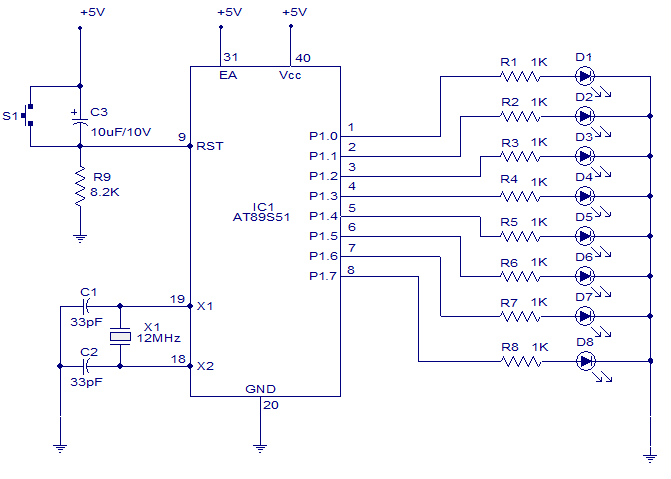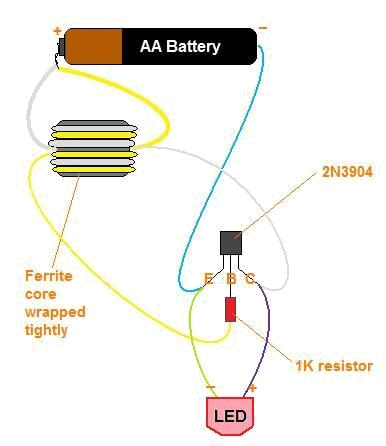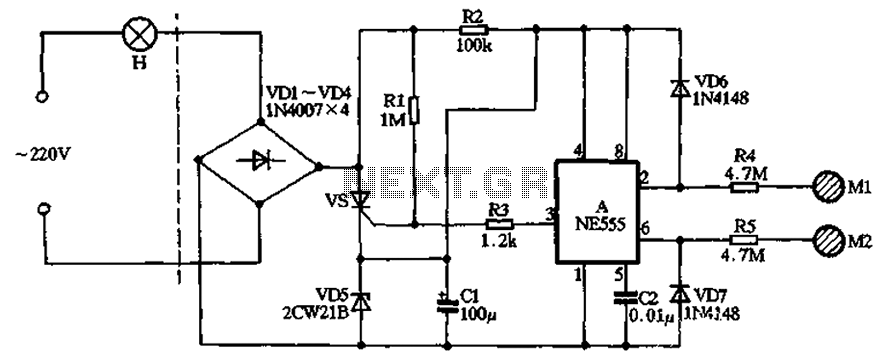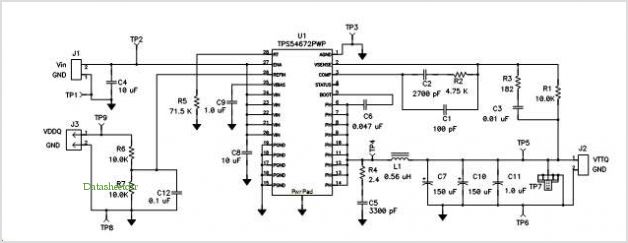
8 channel 6 function light chaser using 8051

A six-function, eight-channel light chaser utilizing the 8051 microcontroller. The AT89S51, a member of the 8051 family, is employed to produce six distinct lighting sequences. The design incorporates straightforward software and hardware components.
The circuit design features the AT89S51 microcontroller at its core, which is programmed to control eight output channels. Each channel corresponds to a specific lighting element, such as LEDs or other light sources. The six lighting sequences can be programmed to create various visual effects, such as chasing, blinking, or fading.
The hardware setup includes the microcontroller connected to a series of output drivers, which may consist of transistor arrays or relay drivers, depending on the power requirements of the connected lights. Resistors may be used to limit the current flowing through the LEDs, ensuring their longevity and proper operation.
The programming of the AT89S51 is done using assembly or C language to define the operation of the light sequences. The software implementation involves creating a finite state machine or a similar control algorithm that dictates how the channels are activated and deactivated in sequence.
Power supply considerations must also be addressed, ensuring that the microcontroller and output devices receive adequate voltage and current. The circuit might include decoupling capacitors to stabilize the power supply and prevent noise from affecting the microcontroller's operation.
Overall, the design of the six-function, eight-channel light chaser is an excellent demonstration of using a microcontroller for dynamic lighting applications, showcasing both the simplicity and versatility of the 8051 architecture in practical electronics projects.6 function 8 channel light chaser using 8051. AT89S51 which belongs to the 8051 family is used for generating 6 lighting sequences. Simple software and hardware.. 🔗 External reference
The circuit design features the AT89S51 microcontroller at its core, which is programmed to control eight output channels. Each channel corresponds to a specific lighting element, such as LEDs or other light sources. The six lighting sequences can be programmed to create various visual effects, such as chasing, blinking, or fading.
The hardware setup includes the microcontroller connected to a series of output drivers, which may consist of transistor arrays or relay drivers, depending on the power requirements of the connected lights. Resistors may be used to limit the current flowing through the LEDs, ensuring their longevity and proper operation.
The programming of the AT89S51 is done using assembly or C language to define the operation of the light sequences. The software implementation involves creating a finite state machine or a similar control algorithm that dictates how the channels are activated and deactivated in sequence.
Power supply considerations must also be addressed, ensuring that the microcontroller and output devices receive adequate voltage and current. The circuit might include decoupling capacitors to stabilize the power supply and prevent noise from affecting the microcontroller's operation.
Overall, the design of the six-function, eight-channel light chaser is an excellent demonstration of using a microcontroller for dynamic lighting applications, showcasing both the simplicity and versatility of the 8051 architecture in practical electronics projects.6 function 8 channel light chaser using 8051. AT89S51 which belongs to the 8051 family is used for generating 6 lighting sequences. Simple software and hardware.. 🔗 External reference





